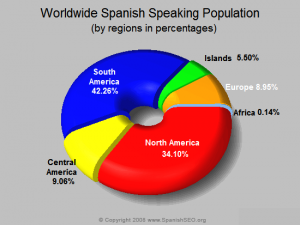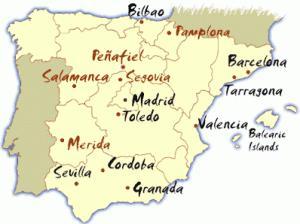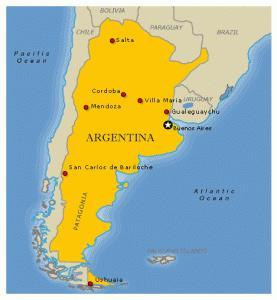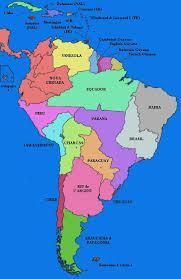Did you know that approximately 407 million people across the globe speak Spanish as their native language, making it the second-most spoken language by number of native speakers after Mandarin? It also boasts 60 million speakers as a second language and 20 million students as a foreign language.

Spanish Spoken Worldwide
In the last 40 years, the study of the Spanish language has grown significantly due to many contributing factors. The two most important are the growing population demographics and economies of many Spanish-speaking countries and of course, expanding international tourism.

Spanish-speaking world
People who plan language study, holidays or living experiences in Spanish-speaking countries generally have a variety of reasons for choosing to do so. Some great reasons for learning Spanish abroad are:
- To keep pace with popular culture
- It can be a business necessity
- It can completely transform a travel experience
- The Latino market is one of the fastest-growing market segment in North America. By 2015, their buying power is expected to reach 1.5 trillion.
- It allows for a better appreciation of Hispanic culture
- Communication with Spanish-speakers at home
- Improves employment potential
- Improves knowledge of your own language
- Having fun and completely expanding your universe!

Students
Something that should be taken into consideration when choosing your destination for studying Spanish abroad is that Spanish is spoken differently everywhere you go. For instance, the pronunciation of the letters y, ll, z and c in Spain is quite different to that in Argentina. Others exist like grammar and vocabulary differences but when it comes down to it, these changes can be compared to the ones between British English and American English. It is more evident in the spoken language than in writing, but they aren’t so extreme that you can’t learn the differences as you need them. Becoming aware of the varieties of the language between regions as well as the language commonality which tie its 407 million speakers together, is part of the fun. Rest assured, whatever variety of Spanish you learn, you will be understood all over the Spanish-speaking world.

Spanish conversation
Choosing the destination in which to learn Spanish may be the hardest decision for many which is why I would like to give an outline of the differences in Spanish-learning experiences in Argentina and Spain. When choosing where to learn Spanish, focus on where you would like to be during a particular season, what kind of adventure you would like to have and, naturally, your budget.
SPAIN
Due to the current economic collapse in Spain, it is relatively cheap to travel in Spain in comparison with other European countries. Offering many Spanish institutes in a number of destinations including Barcelona, Madrid, Granada, Seville, Valencia, Salamanca, Tenerife and Malaga, Spain is a popular choice. It’s one of the sunniest countries in Europe, the beaches are beautiful during Spring and Summer, and its proximity to the rest of Europe is a great advantage. Consequently, the different cities and landscape to be explored within Spain offer quite a dynamic experience for any foreigner.

Spain Destinations

Barcelona
Spanish study experiences here therefore can be so varied in terms of schools as well. There are hundreds of schools varying in sizes and kinds of environment-whether you’re looking for a small, more private-style of learning experience, or a bigger institution where it’s possible to come into contact with many nationalities. Despite much choice being available, school fees in Spain are more expensive than fees in Argentina. For an Intensive Week comprising of 20 hours, the average price is between 150-180 euros ($US 195-$US 235).
Taking into account Spain’s economic crisis and the exuberant economic growth in Argentina (and eventual inflation) over the past few years, the prices for basics such as groceries, rent, and restaurants is very similar.
ARGENTINA
Argentina has it all- great lakes, snowy mountains, glaciers, wild west scenery, beaches, pampas plains, deserts and salt flats, and of course, Buenos Aires. It’s a country of extremes and beauty. So for a Spanish language learner wanting to experience some of the most impressive landscapes in the world, Argentina offers it all.

Patagonia
The top destinations to learn Spanish in Argentina include Buenos Aires, Mendoza, Cordoba, Salta and Bariloche.

Destinations in Argentina
Despite its modern, European feel, there’s no denying that Argentina is still very much a Latin American country. It has an intriguing, fascinating and stunning cultural backdrop to students wanting an authentic Spanish studying experience. Prices vary around the $US 150-$US 200 for an Intensive Week of 20 hours and schools offer various living situations as well. Language students are constantly encouraged to participate in cultural immersion activities like dancing tango, going to parrillas with Porteños, language exchange and even volunteering in disadvantages areas.

Tango
The most common itinery for Spanish students is a long South American trip. Most start their study in Argentina, whether it be for 1 week to a couple of months, then utilizing their language skills, proceed to explore the rest of the incredibly diverse South America.

Map of South America
Best of luck planning your Spanish study-abroad!
